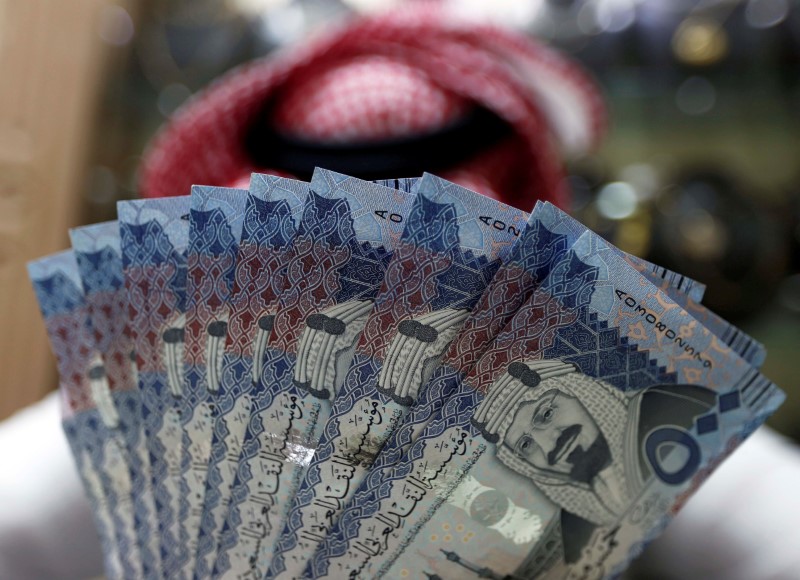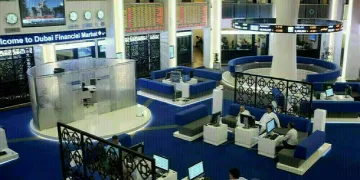 © Reuters. Saudi money changer displays Saudi Riyal banknotes at a currency exchange shop in Riyadh
© Reuters. Saudi money changer displays Saudi Riyal banknotes at a currency exchange shop in RiyadhBy Marwa Rashad
RIYADH (Reuters) – Saudi Arabia’s central bank raised its two key interest rates by 0.25 percentage points on Thursday in an apparent effort to prevent Saudi money rates from falling far below U.S. rates, which could trigger capital outflows from the kingdom.
The central bank lifted its repo rate, at which it lends to commercial banks, to 2.25 percentage points and its reverse repo rate, at which commercial banks deposit money with the central bank, to 1.75 percentage points.
The timing of the move was unusual. Normally, Saudi Arabia waits until the United States alters interest rates before making its own changes; this time, the Saudis acted almost a week before next Wednesday’s U.S. Federal Reserve meeting, which is widely expected to hike U.S. rates by 0.25 percentage point.
In a brief statement, the Saudi central bank said only that its decision was “consistent with monetary stability in the evolving domestic and international monetary conditions”.
But Saudi commercial bankers believe the central bank is keen to prevent a large, negative interest rate spread from opening up with the United States.
In recent months, short-term Saudi money rates have faced downward pressure relative to U.S. rates because of a slow Saudi economy that has cut demand for loans, and heavy borrowing by Riyadh overseas, which reduced its need to borrow domestically.
On Thursday, the three-month Saudi interbank offered rate
At the end of 2016, the Saudi rate was 104 bps above the U.S. rate. A negative spread could increase pressure for Saudi investors to seek higher returns overseas, which authorities are keen to avoid as they seek to fund domestic investment projects.
Thursday was the first time in several years that the central bank hiked its repo rate. In previous monetary tightenings since December 2015, it only raised the reverse repo, limiting upward pressure on money market rates.
Early this month, the central bank took another step that signalled it did not want a large, negative spread to open up with U.S. rates: it announced it would no longer offer repurchase agreements for seven-, 28- and 90-day periods.
The repos, introduced in 2016, were ways for the central bank to loosen money market liquidity by lending money to banks for relatively long periods. When it abolished the instruments, the central bank said it no longer needed them.
Fusion Media or anyone involved with Fusion Media will not accept any liability for loss or damage as a result of reliance on the information including data, quotes, charts and buy/sell signals contained within this website. Please be fully informed regarding the risks and costs associated with trading the financial markets, it is one of the riskiest investment forms possible.
Source: Investing.com





























